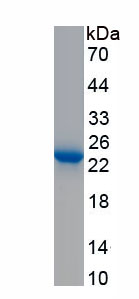Recombinant Heparan Sulfate Proteoglycan (HSPG) 

SDC2; HSPG1; SYND2; Fibroglycan; Syndecan 2; Syndecan Proteoglycan 2; Heparan Sulfate Proteoglycan 1,Cell Surface-Associated; Heparan Sulphate Proteoglycan
Overview
Properties
- Product No.RPA565Hu01
- Organism SpeciesHomo sapiens (Human) Same name, Different species.
-
Applications
Positive Control; Immunogen; SDS-PAGE; WB.
If bio-activity of the protein is needed, please check active protein.
Research use only - DownloadInstruction Manual
- CategorySignal transductionMetabolic pathwayTumor immunityInfection immunityDevelopmental science
- Source Prokaryotic expression, Host E.coli
- Endotoxin Level<1.0EU per 1µg (determined by the LAL method)
- Subcellular LocationMembrane
- Molecular Mass 15.2kDa, Accurate 23kDa(Analysis of differences refer to the manual)
- Residues & TagsGlu19~Glu144 with N-terminal His Tag
- Buffer FormulationPBS, pH7.4, containing 0.01% SKL, 5% Trehalose.
- Traits Freeze-dried powder, Purity > 95%
- Isoelectric Point4.7
Share your citation
Upload your experimental result
Review
Leave a message
Loading...
Sign into your account
Share a new citation as an author
Upload your experimental result
Review
Please attach serial No. on instruction manual


Contact us
Please fill in the blank.
Name*
Organization
Address
E-mail address*
Telephone
Inquiry*
Verification code*

Sequence

Usage
Reconstitute in 10mM PBS (pH7.4) to a concentration of 0.1-1.0 mg/mL. Do not vortex.
Storage
Avoid repeated freeze/thaw cycles. Store at 2-8°C for one month. Aliquot and store at -80°C for 12 months.
Stability
The thermal stability is described by the loss rate. The loss rate was determined by accelerated thermal degradation test, that is, incubate the protein at 37°C for 48h, and no obvious degradation and precipitation were observed. The loss rate is less than 5% within the expiration date under appropriate storage condition.
Increment services
-
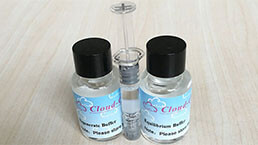 Endotoxin Removal Kit
Endotoxin Removal Kit
-
 BCA Protein Quantification Kit
BCA Protein Quantification Kit
-
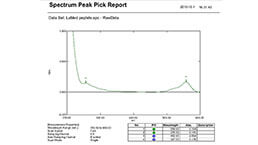 Protein Labeling Customized Service
Protein Labeling Customized Service
-
 Molecular Mass Marker for Protein
Molecular Mass Marker for Protein
-
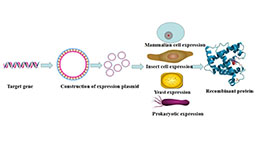 Recombinant Protein Customized Service
Recombinant Protein Customized Service
-
 Monoclonal Antibody Customized Service
Monoclonal Antibody Customized Service
-
 Polyclonal Antibody Customized Service
Polyclonal Antibody Customized Service
-
 Protein Activity Test Experiment Service
Protein Activity Test Experiment Service
-
 Immunoprecipitation (IP) Experiment Service
Immunoprecipitation (IP) Experiment Service
-
 Buffer
Buffer
-
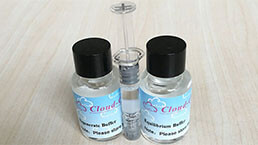 Endotoxin Removal Kit II
Endotoxin Removal Kit II
-
 Real Time PCR Experimental Service
Real Time PCR Experimental Service
-
 Spike RBD Protein (S-RBD)
Spike RBD Protein (S-RBD)
-
 Protein G
Protein G
-
 Protein A
Protein A
Citations
- Cytotoxic effects of antiglypican-3 against HepG3 cell lineEbscohost: Source
- Fibrinogen, an endogenous ligand of Toll-like receptor 4, activates monocytes in pre-eclamptic patientsPubmed: 24661950
- Suramin inhibits hepatic tissue damage in hepatocellular carcinoma through deactivation of heparanase enzymePubmed: 24530413
- Evaluation of antiglypican-3 therapy as a promising target for amelioration of hepatic tissue damage in hepatocellular carcinomaPubmed:25449037
- Impairment of the Endothelial Glycocalyx in Cardiogenic Shock and its Prognostic RelevancePubmed:25692257
- Endothelial glycocalyx layer shedding following lung resectionpubmed:27643669
- Circulating syndecans during critical illness.pubmed:28256016
- Cytotoxic and partial hepatoprotective activity of sodium ascorbate against hepatocellular carcinoma through inhibition of sulfatase-2 andPubmed:29669302
- Glioma targeting peptide modified apoferritin nanocagePubmed:29726297
- Postoperative microcirculatory perfusion and endothelial glycocalyx shedding following cardiac surgery with cardiopulmonary bypassPubmed: 30687934
- Diet Supplementation with a Bioactive Pomace Extract from Olea europaea Partially Mitigates Negative Effects on Gut Health Arising from a Short-Term Fasting Period …
- Heparin prevents in vitro glycocalyx shedding induced by plasma from COVID-19 patients33781826
- A novel mutation in ext2 caused hereditary multiple exostoses through reducing the synthesis of heparan sulfate34042151
- Response of broiler chickens fed diets supplemented with a bioactive olive pomace extract from Olea europaea to an experimental coccidial vaccine?¡33518110
- The effect of pre-operative methylprednisolone on postoperative delirium in elderly patients undergoing gastrointestinal surgery: a randomized, double-blind, placebo …34423832






